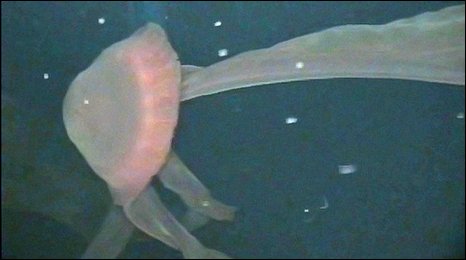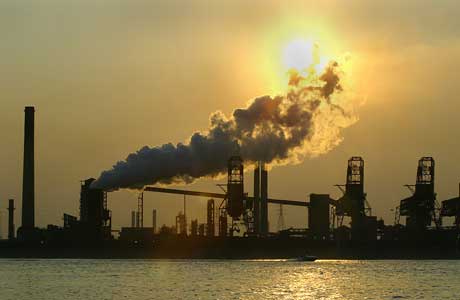
© AP Photo/ The Meridian Star, Paula MerrittA tornado ripped through the Meehan area in Lauderdale County, Miss., Saturday, April 24, 2010, leaving damage to the The walls of the Green Grove Missionary Baptist Church were blown out as a ripped through the Meehan area in Lauderdale County, Miss. on Saturday, April 24, 2010, leaving damage to the Green Grove Missionary Baptist Church.
Yazoo City, Mississippi - Tornadoes ripped through the Southeast on Saturday, killing 10 people in Mississippi and injuring more than a dozen others. Roofs were torn off businesses, homes were splintered, vehicles were overturned and roads were blocked by toppled trees.
Gov. Haley Barbour told The Associated Press there was "utter obliteration" in parts of Yazoo County, an area known for cotton, catfish, blues music and picturesque hills rising abruptly from the flat Mississippi Delta.
Mississippi Emergency Management Agency spokesman Greg Flynn said five people were killed in Choctaw County, including two children. Four victims were in Yazoo County and one was in Holmes County.
More than 15 other counties were also damaged. The swath of debris forced rescuers to pick up some of the injured on all-terrain vehicles the west-central part of the state.
Tornadoes were also reported in Louisiana, Arkansas and Alabama, and the severe weather continued to track eastward.
In Yazoo City about 40 miles north of Jackson, Malcolm Gordon, 63, stood with members of his family peering through a broken window. Above them, the roof was gone, a tree lay across part of the house and power lines stretched across the yard in a neighborhood made up of modest houses and mobile homes on a street that winds around hills and ravines. The smell of shredded pine trees hung the warm breeze.




Comment: It is hard to be 100% sure about the direct casual effect between the vulcano eruption and the French Revolution, but such a link is surely interesting to consider in the light of current events.
Are we to expect local climate disruption followed by crop failure and food riots and finally some sort of revolution? If so, this time it is likely to be lead by the psychopaths in power, not the common people.